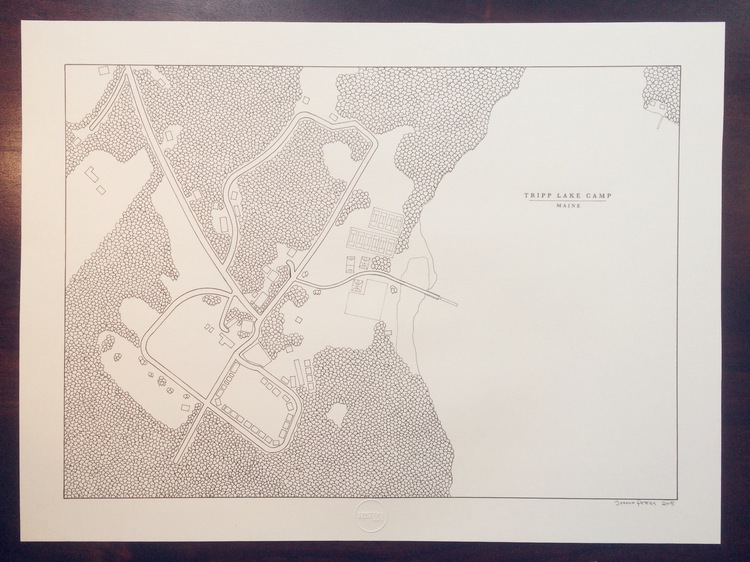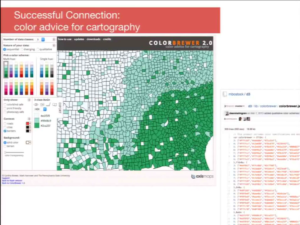In the old times cartographers were artists and many of their hand crafted maps where a piece of genius. In the era of GIS, the esthetic role of maps has been diminished. With Geo-viz web services like cartoDB or MapBox it’s easy to make a good-looking map but it’s actually an interesting data and adjusting color palette to map template that do the job.
 Joshua Peters a cartographer from Calgary had the same felling. A year ago he raised funding on Kickstarted and decided to quit his salary job to follow his dreams – to draw maps. In his one man company J.Peters Fine Mapping Co. you can order a custom, hand crafted maps starting from $80 to $400-500 for a larger piece.
Joshua Peters a cartographer from Calgary had the same felling. A year ago he raised funding on Kickstarted and decided to quit his salary job to follow his dreams – to draw maps. In his one man company J.Peters Fine Mapping Co. you can order a custom, hand crafted maps starting from $80 to $400-500 for a larger piece.
Joshua’s style is clean, minimalistic, even aesthetic which makes his maps look amazing. Each map is drawn with extreme care on Canson® Artist-Series 1557® classic cream drawing paper with black Copic® archival-quality pigment ink. Joshua never copies the same map twice. Each of them is unique. He specialises in urban maps but he has been drawing topographic maps, floor-plans and many more, depending on the needs of the customer.
The process of creating each map requires a lot of work. We’ve asked Joshua to tell us how he does it:
Creating a map is a very time-consuming and meticulous job, though it’s a lot of fun. I start by choosing a source image, which changes depending on the map that has been ordered. If it is a modern city, for example, I simply use Google Maps as my reference. Once the boundaries are confirmed with the client, I bring the source map into Photoshop and prepare it for printing in actual size. Depending on the size of the map, I print the map in multiple sections which I join together into one large image. At this point, I mark my reference points (usual several hundred) and puncture each one with a stylus so that there are many small holes in the source paper. From here, I prepare the good-quality paper for the final version, lay the source map over top of it, and make a pencil mark through each reference point hole so that there are many small dots on the fresh paper. From there I simply connect the dots with ink (carefully drawing the streets or features in the right order) until the map is complete.
I must say that I envy him. His passion turned to a way he lives. Isn’t it something that each of us would like to achieve?
DO YOU LIKE GEOAWESOMENESS? SUBSCRIBE TO OUR WEEKLY NEWSLETTER
[wysija_form id=”1″]















